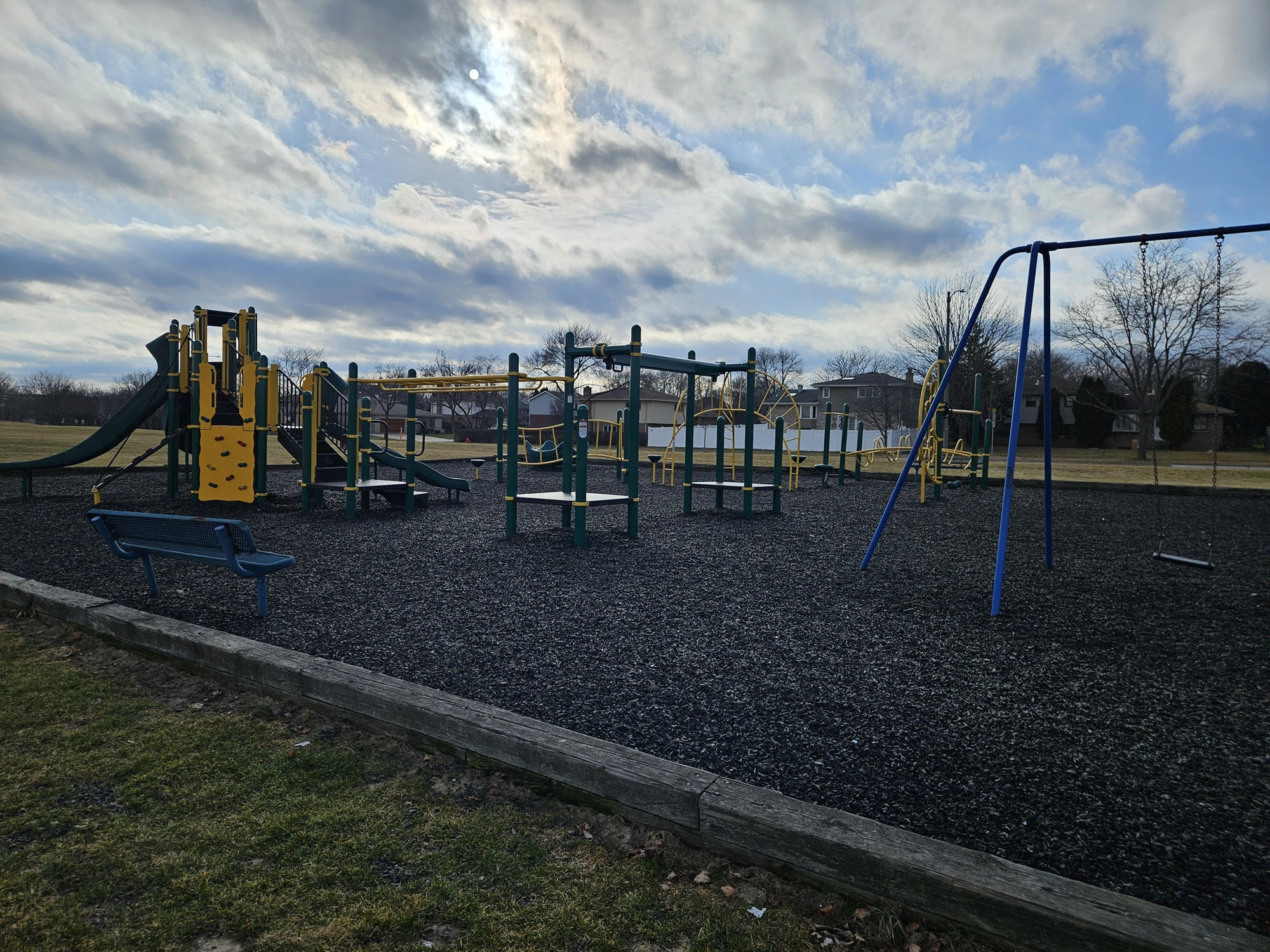
In the heart of the Midwest, where weather patterns shift from snowy blizzards to scorching heat waves, maintaining a clean and functional landscape can be a challenge. But for Chicagoland homeowners, property managers, and municipal planners who’ve chosen recycled rubber mulch, the solution is already underfoot—literally.
Rubber mulch is renowned for its durability, safety, and eco-friendly nature. What many users may not know, however, is just how easy it is to keep it looking great and performing well year-round with just a little seasonal care. Here’s a practical guide to doing just that—explicitly tailored for Chicago’s unique climate and needs.
Why Rubber Mulch Works for Chicagoland
Think about the extremes: hot summers over 90°F, freezing winters with snow and ice, and powerful storms that roll off Lake Michigan. Rubber mulch was built for this.
Unlike organic mulch, which decomposes, blows away, or becomes compacted, rubber mulch retains its form, color, and coverage throughout. Its non-porous design means it doesn’t absorb water, attract pests, or promote mold growth. And while traditional mulch may need to be replaced annually, rubber mulch boasts a 10–20 year lifespan—a game-changer for low-maintenance landscaping.
Whether you’re a parent managing a school playground, a facilities director keeping public spaces safe, or a homeowner maintaining curb appeal, rubber mulch minimizes your maintenance load while maximizing return.
Five Routine Maintenance Habits to Keep Your Mulch Fresh
Keep It Clean
Debris build-up not only affects appearance, but it can harbor pests or prevent water from draining correctly. Use a leaf blower on low or sweep gently with a rake to remove sticks and leaves. Occasionally, hose down the mulch using water mixed with biodegradable soap to refresh the surface and eliminate grime.
Rake and Refresh
Over time, foot traffic or weather may cause mulch to shift. Lightly rake the surface every few weeks to redistribute rubber chunks and restore evenness. Top off any thin patches to preserve aesthetic appeal and safety, especially in playground areas or pathways.
Watch the Weather
While rubber mulch is naturally weather-resistant, a few climate-specific practices help even more:
- In summer, spraying mulch with water can reduce heat buildup and surface glare.
- In winter, check for displacement after snow melts and redistribute as needed.
Weed Management
Although weeds are rare with rubber mulch, they can still sprout around the edges or in unprotected areas. Install a weed barrier underneath your mulch and promptly remove any weeds that appear by hand to prevent them from rooting and spreading.
Monitor Depth and Condition
Rubber mulch should be placed in a 2–4 inch layer to provide proper weed suppression and shock absorption. Each year in early spring, inspect for signs of compression, fading, or wear. A quick refresh of color-matched mulch is usually all that’s needed.
Seasonal Care Calendar for Chicagoland Landscapes
Each season brings its to-do list, but with rubber mulch, it’s short and sweet:
- Spring: Rake mulch disturbed by wind or snow. Check depth and add mulch if necessary.
- Summer: Watch for fading and spray mulch during extreme heat.
- Fall: Rake up leaves and storm debris. Insulate roots with a fresh top layer.
- Winter: Little action needed. Inspect for movement once the snow melts.
Because rubber mulch doesn’t freeze or decompose, winter maintenance is minimal, offering a significant perk to those tired of year-round upkeep.
Local Advantages: Built for the Midwest
Rubber mulch doesn’t just survive Chicagoland weather—it thrives in it. Here’s why:
- Temperature Tolerance: Resists UV damage in the summer and remains unfrozen in winter.
- Storm-Proof: Won’t float away like wood chips during rainstorms.
- Stays Put: Heavier weight and density mean it resists wind displacement.
- Blends In: Available in color tones that suit Midwest landscaping styles—black, brown, red, and even green.
Expert Tips & Local Insights
We asked our Chicagoland field team and frequent customers to share what works best in the real world. Here’s what they recommend:
- Use border edging: “Installing a border around your rubber mulch bed keeps it tidy and prevents rubber from spreading onto walkways,” says Mario, a landscaper in Naperville.
- Check after plowing: For playgrounds and commercial sites, snow plows can unintentionally push mulch. “We mark off mulch zones with stakes in winter to avoid accidental clearing,” advises school grounds manager Carla in Oak Park.
- Color match wisely: “Darker shades, such as black or brown, show less dirt between cleanings, while red or green can pop for added curb appeal,” notes Jay, a product expert at Recycled Rubber Products.
Common Rubber Mulch Questions—Answered
Q: How long does rubber mulch last in Chicagoland’s climate?
Answer: Most installations last 10–20 years with simple upkeep. Wind, rain, and snow don’t break it down like wood mulch.
Q: Is it safe for kids and pets?
Answer: Yes. Recycled Rubber Products uses IPEMA-certified mulch that’s non-toxic, splinter-free, and impact-absorbing.
Q: How do I keep it looking new?
Answer: Regular raking, cleaning, and seasonal top-offs maintain color and depth. Colorant-enhanced mulch can also reduce fading.
Q: What if weeds appear?
Answer: Weed barriers and prompt removal will handle the few that breakthrough.
Ready to Elevate Your Landscape?
Rubber mulch is one of the most intelligent and sustainable landscaping choices for the Chicagoland. With minimal upkeep, weather resistance, and long-term savings, it’s the go-to for homeowners and commercial spaces alike.
Contact Recycled Rubber Products today for premium recycled mulch, expert advice, and fast delivery throughout the Chicago area. Let’s keep your landscape fresh—season after season.

